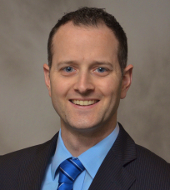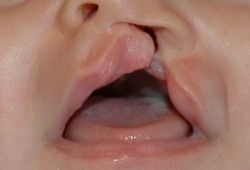Summary
Definition
History and exam
Key diagnostic factors
- presence of risk factors
- bilateral cleft lip ± palate
- unilateral cleft lip ± palate
- isolated cleft palate
- microform cleft lip
- isolated sub-mucous cleft palate
- positive antenatal ultrasound
Risk factors
- genetic predisposition
- anticonvulsant drugs
- maternal tobacco use
- maternal alcohol consumption
- folic acid deficiency
Diagnostic investigations
Investigations to consider
- auditory brain stem response (ABR) test
- vertebral spine x-rays
- renal ultrasound
- fluorescence in situ hybridisation (FISH)
- ophthalmic examination
Treatment algorithm
Contributors
Authors
Travis T. Tollefson, MD, MPH, FACS

Professor and Director
Facial Plastic and Reconstructive Surgery
Otolaryngology - Head and Neck Surgery
Cleft and Craniofacial Team
University of California Davis
Sacramento
CA
Disclosures
TTT has received an honorarium and reimbursement for travel by the AO Foundation for teaching on a facial trauma course. TTT serves on the American Board of Otolaryngology and the American Board of Facial Plastic and Reconstructive Surgery, and receives a royalty from Thieme publishing for the textbook Complete Cleft Care. TTT is an author of studies referenced in this topic. TTT serves as editor-in-chief of the journal ‘Facial Plastic Surgery and Aesthetic Medicine’.
David A. Shaye, MD

Instructor
Facial Plastic and Reconstructive Surgery
Massachusetts Eye and Ear
Harvard University
Boston
MA
Disclosures
DAS has received an honorarium and reimbursement for travel by the AO Foundation for teaching on a facial trauma course.
Peer reviewers
Jordan N. Halsey, MD
Pediatric Plastic and Craniofacial Surgeon
Assistant Professor of Plastic Surgery
Johns Hopkins University
Assistant Professor of Plastic Surgery
University of South Florida
Tampa
FL
Disclosures
JNH declares that he has no competing interests.
Use of this content is subject to our disclaimer
